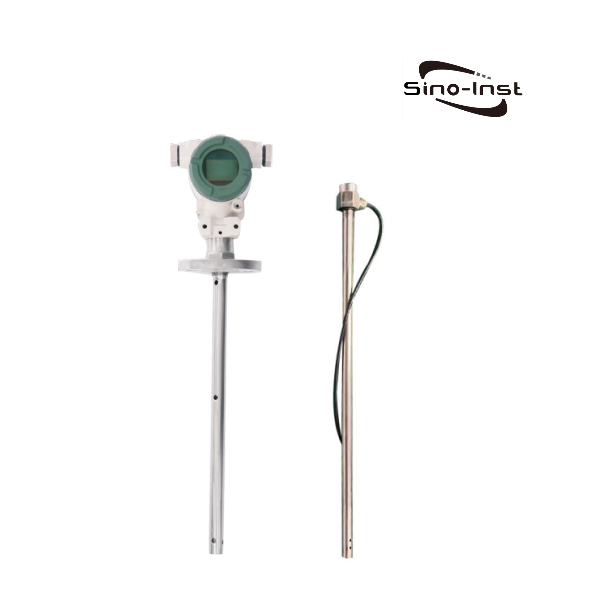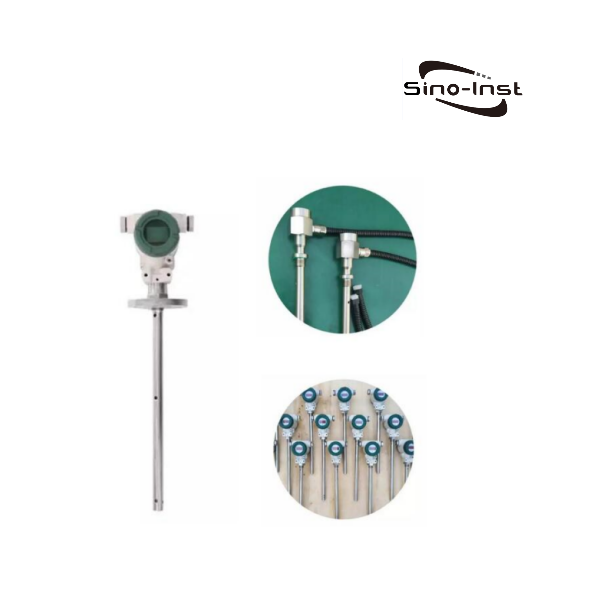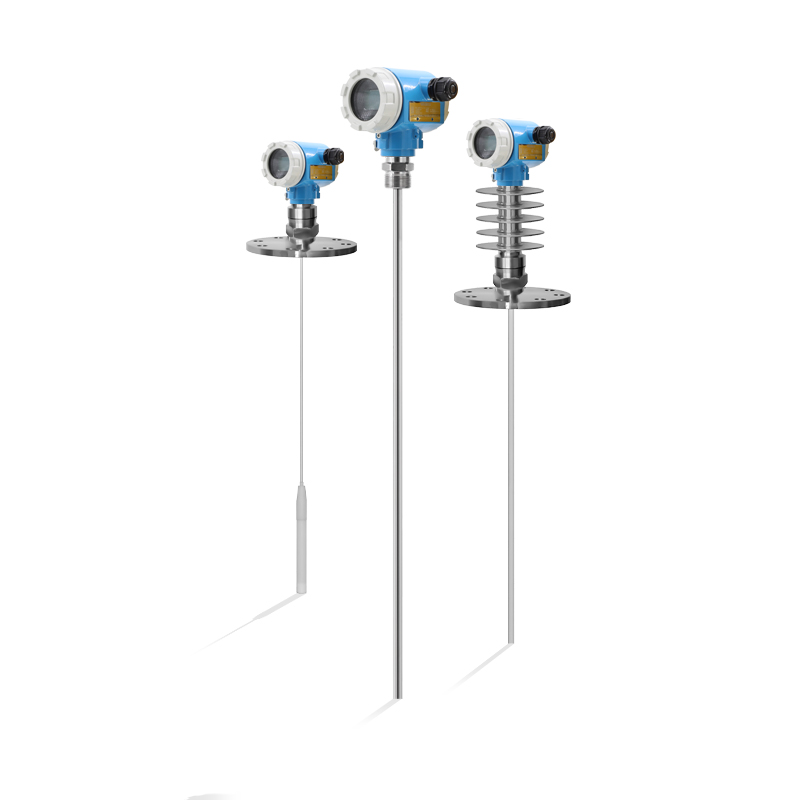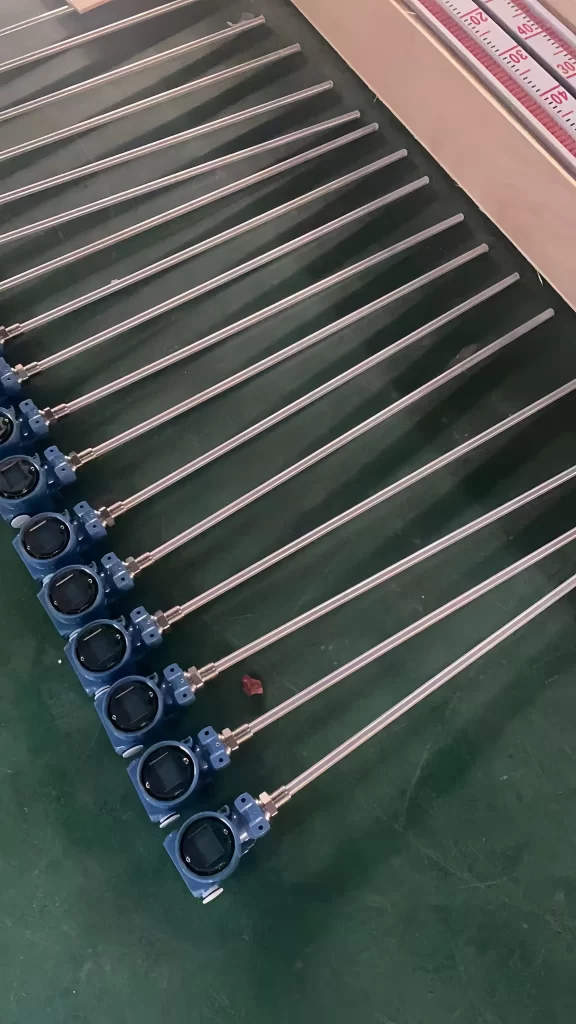
Capacitive level sensors are a crucial technology for monitoring the level of liquids and solid powders. Capacitive level sensors are a type of level transmitter that can be used for measuring the level of liquids, oils, and solids. They have no moving parts and are unaffected by water vapor, dust, or condensation.
Capacitive level sensors are widely used for continuous measurement. They offer stable and reliable operation and are resistant to high temperatures and high pressures. Intelligent level sensors use a two-wire (loop-powered) 4-20mA DC measurement signal, making them easy to calibrate. They are widely used in the petroleum, chemical, and pharmaceutical industries.
What Is A Capacitive Level Sensor?
Capacitive level sensors measure the liquid level in a container by detecting changes in capacitance. These sensors can provide continuous level measurement or a switching signal. They are compatible with all common fuels, oils, water, and coolants.
Capacitive sensors are widely used in industrial and commercial applications. They can be used for both point level detection and continuous level measurement. Their advantages include being mechanically wear-free and easy to install. However, they do have limitations regarding container material and wall thickness.
How Do Capacitive Liquid Level Sensors Work?
Capacitive level sensors use changes in capacitance to measure the liquid level within a container. This change in capacitance is typically caused by the difference in dielectric constant between the liquid and air. As the liquid level changes, the capacitance of the capacitor also changes.
Inside a container, electrodes and the conductive container wall form a capacitor. For a given electrode, assuming the dielectric constant of the measured medium remains constant, a fixed-frequency measurement voltage is applied to the electrode. The current flowing through the capacitor depends on the height of the medium between the capacitor electrodes. And the current is proportional to the height of the medium between the capacitor electrodes.
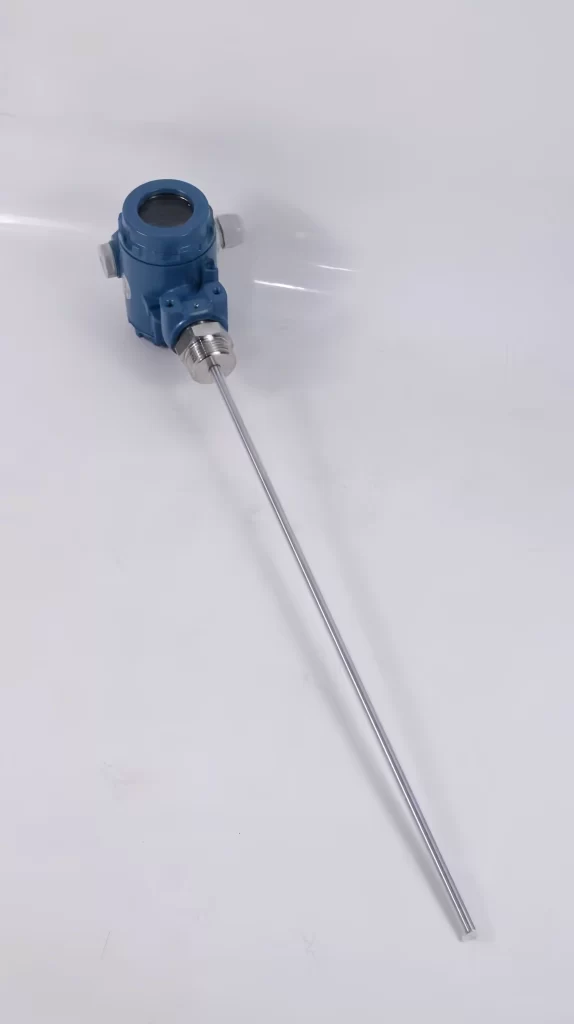
How It Operates
Capacitor formation.
The sensor probe and the container wall typically act as the two plates of a capacitor. One “plate” is an electrode probe mounted inside the tank. The other “plate” is a reference electrode in the conductive tank wall or non-metallic container.
Dielectric effect.
The measured substance acts as a dielectric material between the plates. The capacitance depends on the dielectric constant of the measured substance, the area of the plates, and the distance between them.
Level measurement.
As the liquid level rises, the capacitance increases. As the liquid level drops, the capacitance decreases.
Signal conversion.
The sensor converts the measured capacitance value into corresponding liquid level information. A conversion circuit converts the capacitance change into an electrical signal output (e.g., 4-20mA output).
Types of Capacitive Sensors
Capacitive level Sensors typically have a measurement range of 0-30 meters. However, you can choose from a variety of construction types depending on the range. These include cable-type, rod-type, and high-precision models.
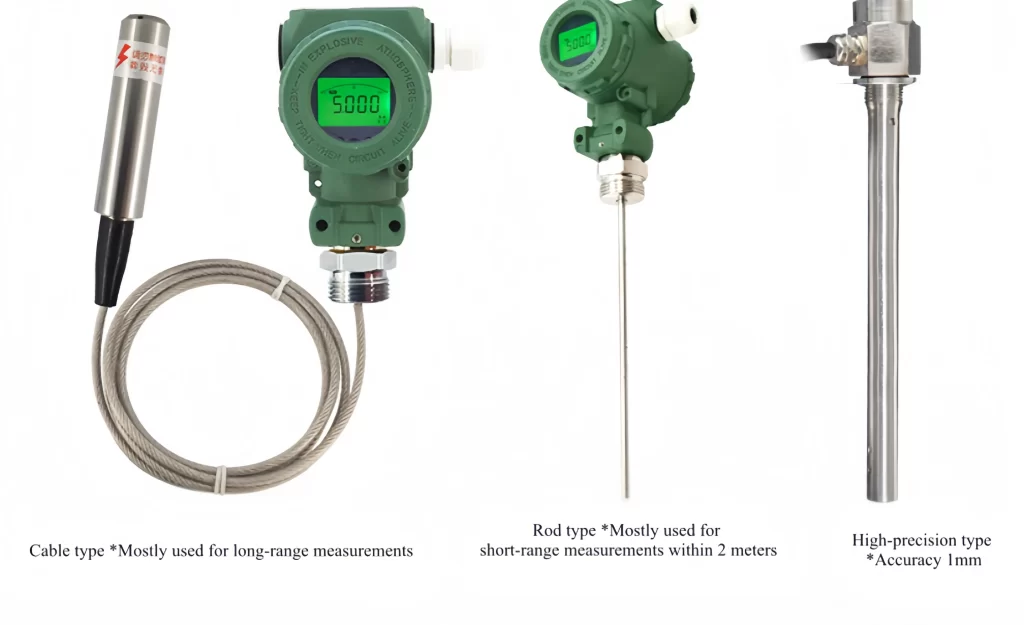
Cable-Type Capacitive Level Sensors
Cable-type capacitive level Sensors operate similarly to basic capacitive level Sensors. They both measure liquid level using the capacitance principle. However, their core structure utilizes a steel cable as the conductive electrode. This adapts to larger spaces and is easier to install and maintain.
Cable-type capacitance level Sensors are often used for long-range measurements. Wire-cable capacitive level Sensors are often used for long-range measurements. They have a measuring range of 0-20 meters. They operate in temperatures from -25°C to 85°C. Accuracy can reach ±3-5mm. They are suitable for use in the petroleum, chemical, and power industries.
Rod-Type Capacitive Level Sensors
Insertion-rod capacitance level Sensors use the principle of capacitance to measure liquid levels. They consist primarily of a probe and a circuit board, boasting a simple structure. The probe can be directly inserted into the liquid to measure the level.
Insertion-rod capacitance level Sensors are primarily used for measuring ranges within 2 meters. They can measure temperatures up to 800°C. They are suitable for harsh working conditions such as those in the chemical and metallurgical industries.
High-precision capacitive level Sensors
High-precision capacitive level Sensors utilize capacitance detection technology. Their core component is an electrode sensor.Their error can be controlled to within 1mm.
High-precision capacitive level Sensors offer high accuracy, excellent stability, and strong adaptability. They are minimally affected by temperature and fluid fluctuations. They are widely used in industries such as chemical, petroleum, and food processing.
n addition, Sino-inst offers capacitive oil level sensors. These can be installed in various settings to accurately measure the oil level of gasoline, diesel, and hydraulic oil. Lengths can be customized to your requirements. They can output standard signals of 4–20mA and 0–5V, as well as RS232 and RS485 communication signals.
Furthermore, capacitive level sensors are suitable for high-temperature and high-pressure applications. For example, Sino-inst’s 802 series capacitive level sensors. They can be used for continuous measurement of liquid levels within containers. They can be customized for high-temperature measurement (-50 to 250°C) or high-pressure measurement (up to 32 MPa).
Advantages of Capacitive Level Sensors
High Accuracy and Stability
Capacitive level sensors have no moving parts. Therefore, they are unaffected by vibration and have a long service life. They also provide accurate and reliable level monitoring data.
Versatility
Capacitive level sensors are compatible with a wide range of fluids. There are including non-metallic liquids, oils, and coolants. Regardless of the dielectric constant of the fluid, the sensor provides accurate level measurement.
Suitable for Harsh Environments
Capacitive level sensors are capable of operating in high temperatures, high pressures, and corrosive liquids. They are widely used in industrial applications. They can distinguish between different materials. This is beneficial in applications such as the food and pharmaceutical industries.
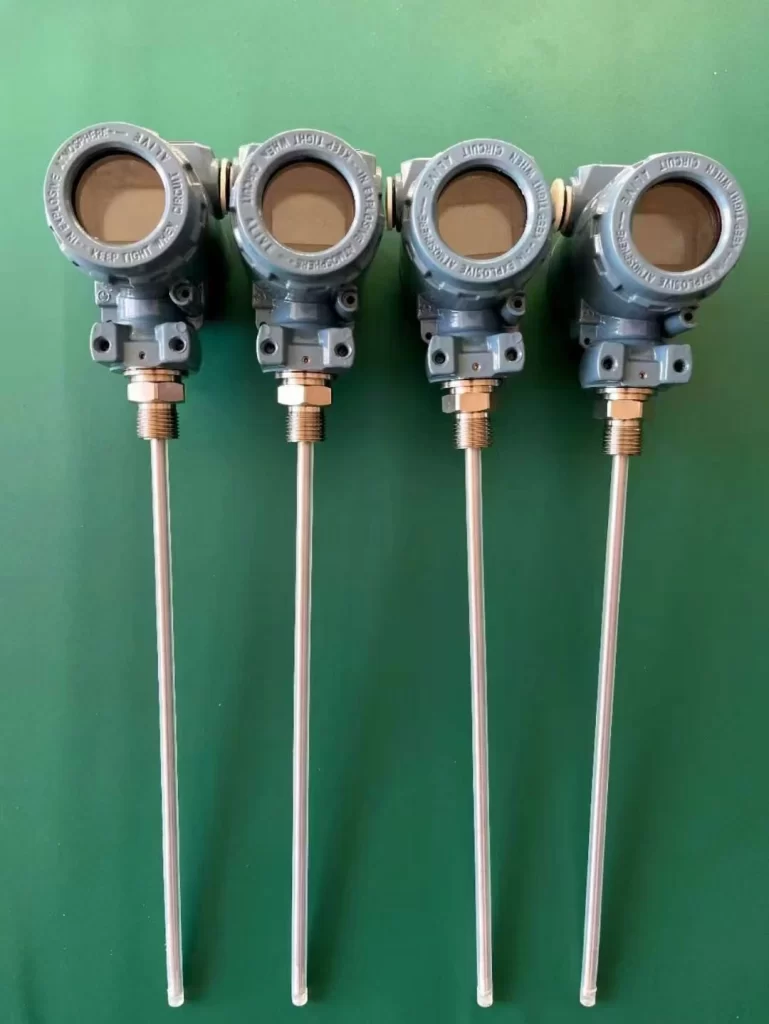
Simple Structure
Capacitive level sensors have a simple structure with no moving or elastic parts. This results in extremely high reliability and minimal maintenance. Routine major, medium, or minor repairs are generally unnecessary.
What Is the Difference Between a Capacitive Level Sensor and an Ultrasonic Level Sensor?
| Feature | Capacitive Level Sensor | Ultrasonic Level Sensor |
| Working Principle | Measures liquid level using capacitance change . | Measures liquid level using reflection time of ultrasonic waves. |
| Contact Requirement | Contact. | Contactless. |
| Applicable scenarios | Suitable for conductive and non-conductive liquids, powders, and granular materials. | Applications for liquid, solid, and non-contact measurement. |
| Accuracy | High accuracy. However, this may be limited by environmental factors and the dielectric constant of the material. | High accuracy. However, this may be affected by bubbles or gas. |
| Installation | Installation is relatively simple. | Needing specific positioning to avoid air bubble interference. |
| Cost | Moderate price. | High price. |
More Level Measurement Solutions
Capacitive level sensors are efficient and stable tools for liquid level monitoring. They not only provide accurate and reliable level measurement and data output, but can also replace traditional float, submersible, and differential pressure level transmitters in a variety of applications. They bring efficiency to production and monitoring, while also providing reliable technical support.
Sino-inst offers flow meters, level measurement, pressure measurement, and temperature measurement instruments. If you need to purchase capacitive level sensors or have any technical questions, please feel free to contact us.
-1.jpg)
